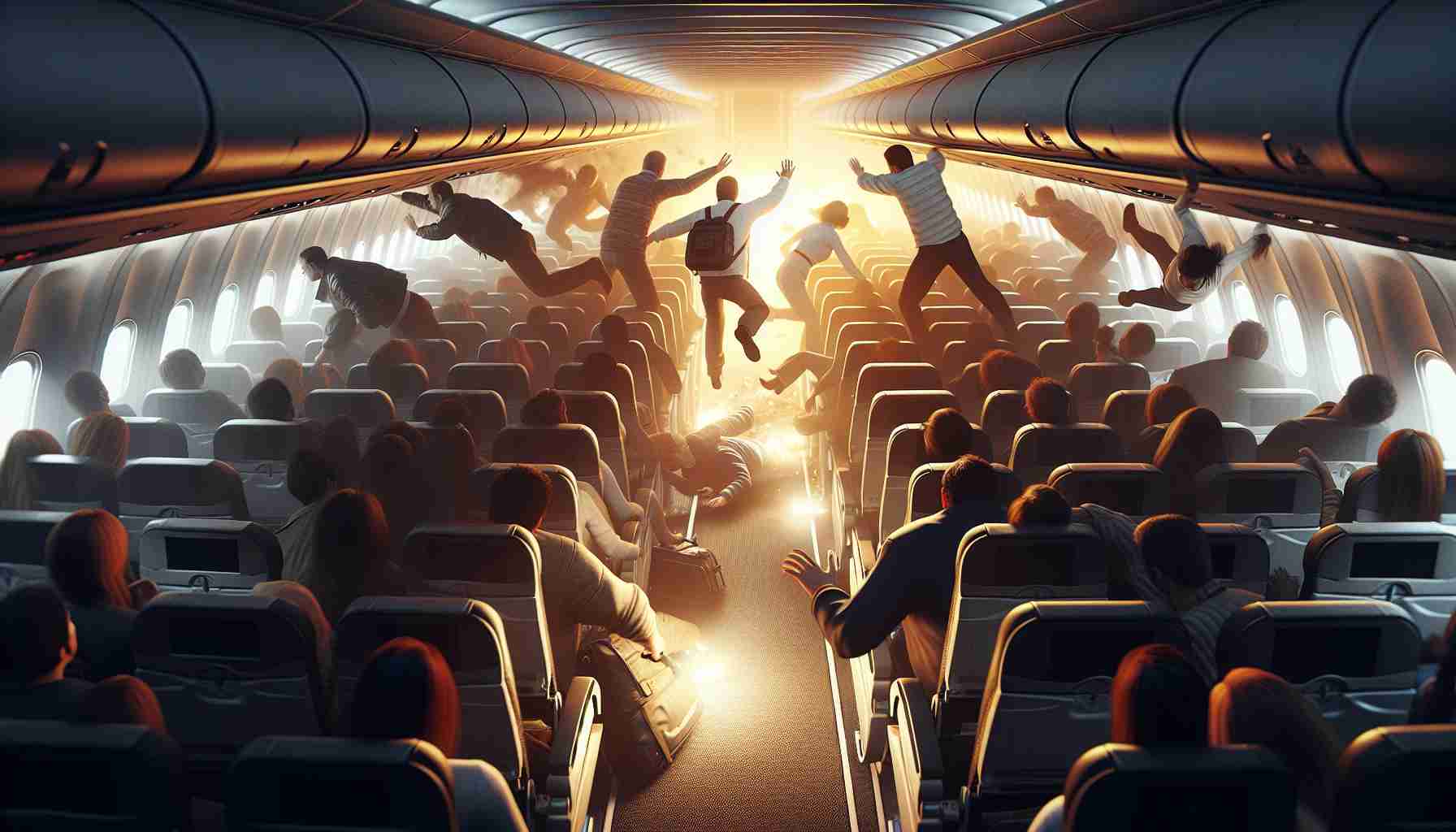Air France Flight Faces Unexpected Crisis
On the evening of January 3, 2025, passengers on an Air France flight from Paris to Barcelona experienced a terrifying situation shortly after takeoff. The Airbus A318, designed for short to medium-haul flights, emitted a cabin pressure emergency signal shortly after leaving Roissy-Charles-de-Gaulle Airport at 21:45.
Just 17 minutes into the flight, a video shared on social media captured the moment oxygen masks were deployed, with several passengers visibly shaken and some children heard crying in the background. The aircraft, which can carry up to 132 passengers, swiftly descended to 8,000 feet and turned back to Paris as per safety protocols.
In a statement, Air France confirmed that the flight crew had decided to return due to a malfunction in cabin pressurization. The safety measures were promptly enacted, and oxygen masks were released to ensure passenger safety.
The flight landed safely at 22:12 local time for technical checks. As a result, flight AF1448 and its return leg, AF1449, were canceled. Air France’s ground teams assisted affected passengers, promising to rebook them to Barcelona as soon as possible. The airline expressed regret for the inconvenience while emphasizing that passenger safety is their top priority, noting that crews are routinely trained to handle such emergencies.
Emergency Protocols in Aviation: Lessons from the Air France Flight Crisis
Air France Flight Faces Unexpected Crisis
On January 3, 2025, an Air France flight from Paris to Barcelona encountered a significant emergency shortly after takeoff. Passengers aboard the Airbus A318 were startled when the aircraft activated a cabin pressure emergency signal just 17 minutes into the journey. This situation highlights the importance of understanding airline safety protocols and cabin pressure management.
Understanding Cabin Pressure Emergencies
Cabin pressure emergencies can occur for several reasons, including technical malfunctions and rapid altitude changes. The Airbus A318, designed for short to medium-haul flights, is equipped with advanced systems to maintain optimal cabin pressure for passenger comfort and safety. However, instances of pressure loss can necessitate immediate responses from both the flight crew and the passengers.
Safety Protocols in Action
In response to the emergency signal, the flight crew executed established safety protocols, descending to 8,000 feet and deploying oxygen masks for passengers. This action reflects the rigorous training that airline crews undergo to manage in-flight emergencies. Airlines like Air France prioritize these simulations to ensure staff are prepared for various scenarios, fostering a secure flying environment.
Passenger Assistance and Rebooking Processes
After the situation was resolved, the flight returned safely to Roissy-Charles-de-Gaulle Airport at 22:12 local time for technical assessments. Air France facilitated the rebooking process for affected passengers, demonstrating the airline’s commitment to customer service even amid disruptions. Such actions are critical in maintaining customer trust during crises.
Pros and Cons of Modern Air Travel Safety
| Pros | Cons |
|——————————-|——————————–|
| High levels of safety training | Potential for unexpected emergencies |
| Advanced technology in aircraft | Limited understanding by passengers of safety protocols |
| Quick response systems | Emotional impact on passengers during crises |
Air Travel Safety Trends and Innovations
Air travel continues to evolve with advancements in safety technologies. Modern aircraft are increasingly equipped with sophisticated monitoring systems that can detect potential issues before they escalate into emergencies. Innovations in cabin pressure management, redundant systems, and real-time data analytics contribute to higher safety standards in the aviation industry.
Predictions for Future Aviation Safety Protocols
As passenger air travel grows, future innovations may include:
– Enhanced training simulations for flight crews, incorporating virtual reality and AI.
– More robust communication systems to keep passengers informed during emergencies.
– Improvements in cabin pressure technology to minimize the likelihood of pressure-related incidents.
Conclusion: The Importance of Preparedness in Aviation
The Air France flight incident serves as a reminder of the importance of preparedness and the effective response mechanisms within the aviation sector. Understanding procedures and the capabilities of modern aircraft is essential for both passengers and crew. As the industry continues to innovate and improve safety measures, travelers can have greater confidence in their flying experiences.
For more insights into aviation safety, visit Air France.
